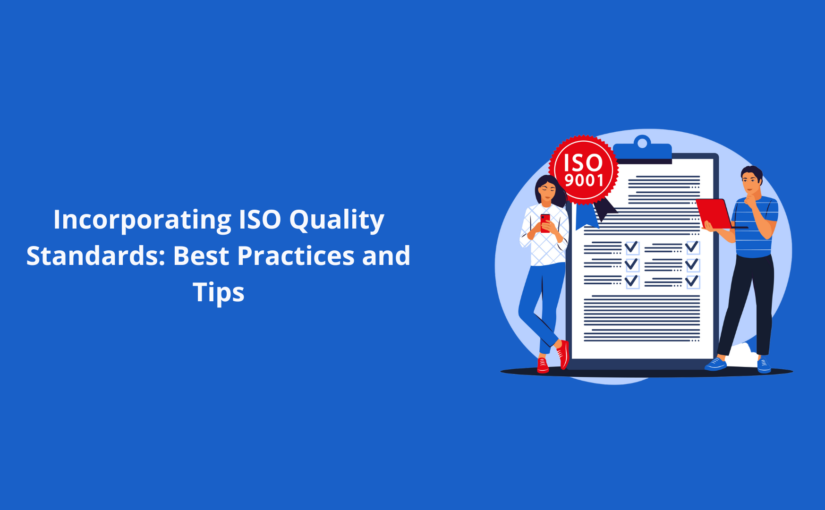Organisations always seek methods to improve their goods, services, and operations. ISO quality standards offer a systematic foundation for achieving consistent quality, customer satisfaction, and continual improvement, particularly ISO 9001. Implementing ISO quality standards successfully requires thorough planning, dedication, and a thorough grasp of the standard’s guiding concepts. This blog explores the importance of ISO Quality Standards, presents best practices for implementing them, and offers helpful advice to make the transition effective. Professionals looking for thorough understanding may also profit from ISO 9001 Training.
Table of contents
- Understanding ISO Quality Standards
- Best Practices for Incorporating ISO Quality Standards
- Tips for a Successful ISO Quality Standards Incorporation
- Conclusion
Understanding ISO Quality Standards
Internationally recognised rules known as ISO quality standards describe the best ways to achieve quality, effectiveness, and customer satisfaction in various industries. The ISO 9001 standard, in particular, concentrates on quality management systems and strongly emphasises a process-based methodology to guarantee that an organisation continuously complies with legal and customer criteria.
Best Practices for Incorporating ISO Quality Standards
Let’s delve deeply into the ISO Quality Standards Best Practises:
- Senior leadership’s dedication is necessary for effective implementation. Leaders need to commit resources and actively promote ISO quality standards.
- Participate in the implementation process with staff members at all levels. Their input and participation are essential for the standards to be adopted and followed effectively.
- Conduct a gap analysis to compare the current practises of your organisation to those required by ISO 9001. Determine what needs to change to meet the criteria.
- Make a thorough road map defining the procedures, deadlines, and roles in implementing ISO quality standards.
- While ISO standards offer a framework, ensure the implementation considers the distinct demands, procedures, and culture of your organisation.
- Employees should get instruction on ISO quality standards, their applicability, and how they will affect their roles. This encourages comprehension and ownership.
- Create a system to record processes, policies, procedures, and records. Make sure the documentation is current and easily accessible.
- To get support and understanding, explain the developments, modifications, and advantages of ISO adoption to employees, clients, and stakeholders.
- Establish procedures for tracking and measuring key performance indicators (KPIs) to evaluate progress and pinpoint improvement areas.
- Conduct internal audits frequently to evaluate compliance, spot non-conformities, and implement corrective measures.
Tips for a Successful ISO Quality Standards Incorporation
Here, we expand on the guidelines for incorporating ISO quality standards:
- Early on in the process, get upper management’s commitment. Their backing creates the environment for effective execution.
- Keep the implementation simple and in line with the size and complexity of your organisation.
- Constant improvement is encouraged by ISO standards. Support an adaptive learning environment.
- Think about working with an expert ISO consultant to help you implement.
- Showcase the advantages that ISO quality standards have for the organisation and its stakeholders, customers, and staff.
- Process adjustments are frequently necessary to incorporate ISO quality standards. Encourage the organisation to adopt a positive outlook on change.
- To guarantee seamless integration, keep track of your implementation’s progress and make any necessary revisions.
- Celebrating important turning points and accomplishments along the road to keep staff members inspired and involved.
Conclusion
Implementing ISO quality standards, particularly ISO 9001, calls for commitment, cooperation, and dedication to ongoing development. Organisations can achieve consistency, customer happiness, and competitive advantage by adhering to best practices, personalising implementation, and promoting quality culture. Through ISO 9001 training, professionals can gain a deeper understanding of ISO quality standards, giving them the information and abilities to implement them into their organization’s operations properly. ISO standards provide a road map to direct organisations as they work to achieve excellence and quality while fulfilling customer expectations.

